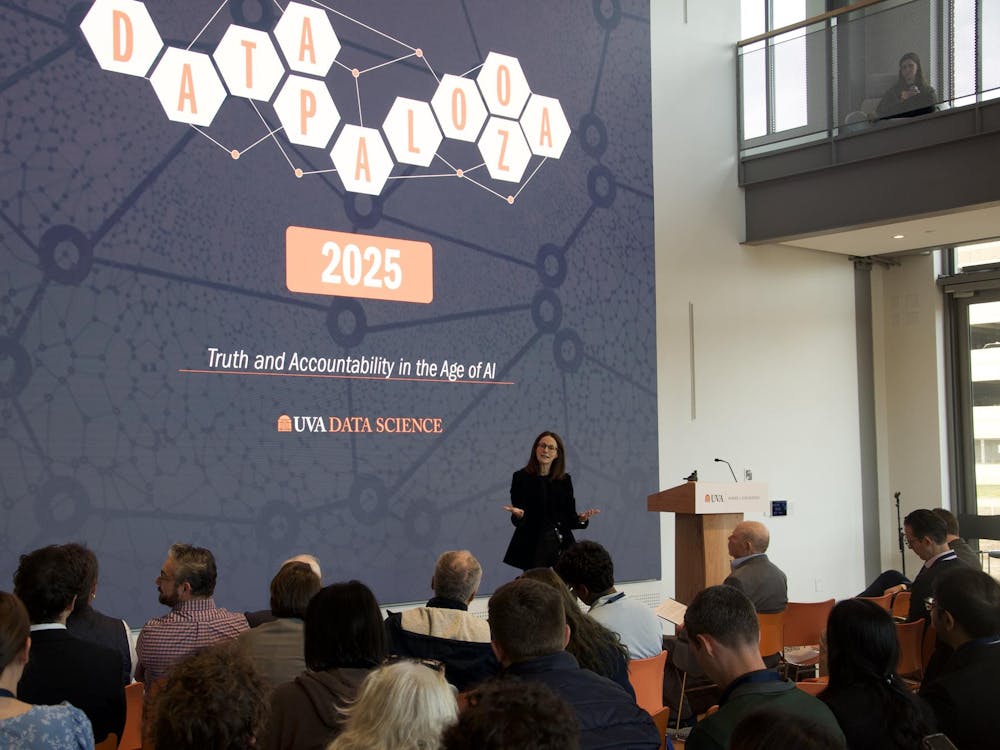Oceans have been gauged, the human body dissected and the earth's movements monitored, but outer space is an area that many feel is widely unexplored and largely unknown.
Space holds a mystery that man has been trying to solve for centuries. Although many projects of the past, such as Galileo's first telescope to the recent Hubble Space Telescope, have shed light on the planets and their composition, their invention have brought forth more questions than answers.
NASA's newest project, Space Interferometry Mission, hopes to answer some of those inquiries in 2009, when it's sent into space. SIM is a $932 million venture and part of NASA's Origins Program, a series of multi-million dollar research efforts dedicated to answering the fundamental questions of the universe. These questions include the distance from our sun to the Milky Way, the existence of other galaxies and whether or not life exists elsewhere in the universe.
Asst. Astronomy Prof. Steve Majewski will be heading one of the main teams that will have access to SIM. The team also includes University research scientist Richard Patterson and Astronomy Research Prof. Ken Seidelmann.
NASA allowed researchers to submit proposals regarding the use of SIM's time, and Majewski's team proposal won the most use of the machinery.
Majewski's primary project objective is to determine details of the Milky Way, such as its mass and weight.
The team is excited that it may find answers "to questions that have existed before I was born," said Majewski.
Majewski's project will use the motions of stars to study the forces that cause those motions, information that team members hope will lead to a better understanding of the distribution of matter in the Milky Way.
Stars with planets around them exert a force on that planet, and that planet also pulls on the star, just as "the Sun pulls on Earth and the Earth pulls back," Majewski said. With stars, "you may not see the planet itself but the star wobbles, and if we figure out which stars wobble, we can explore further to see if there is a planet around that star."
Majewski's project also involves developing a grid of stars that are stable, allowing researches to compare which stars have motion to the ones that don't move.
"We're looking for the boring, uninteresting stars," Majewski joked. "Stars that don't do anything at all but are very stable so they will serve as reference grids."
The key to understanding the universe lies hidden in the positions and distances of the stars and galaxies, which is the primary purpose of SIM.
SIM is a "large space-based instrument with very high precision and resolution for detecting several things," said Astronomy Prof. Philip Ianna, who is a member of another key SIM science research team. SIM can measure the motions of stars and cosmic bodies with unprecedented accuracy, up to hundreds of times more accurately than any other instruments.
Scientists previously were limited to studying stars of a certain brightness, but SIM will "measure a thousand times more precisely on stars that are a thousand times fainter," Majewski said.
SIM can calculate the position of stars with an accuracy of four microarcseconds, which is equivalent to being able to see the grass in a yard grow every second from as far away as six miles, according to NASA's Web site. As long as the light is sufficient, SIM can measure the distance to any object in the Milky Way Galaxy.
SIM will be positioned 59 million miles from Earth after being launched by a rocket in 2009 and will follow the Earth in its orbit around the Sun.
Despite SIM's seemingly far-off launch date, "we have a lot of work ahead," Majewski said. Majewski's team was allocated use of SIM for 7 percent of the time it will be in orbit, the most of any research team. Still, many of the team's calculations must be done prior to even seeing SIM.
SIM will be the first space-launched instrument to use optical interferometry, which measures an object based on the way the wavelength and frequencies of light produced by the object interact. Pioneered by physicist Albert Michelson in 1907, optic interferometry can best be utilized when outside the Earth's atmosphere, which distorts the measurements of the light. In space, optic interferometry instruments can combine light from various telescopes as if they were pieces of a single mirror. SIM will utilize multiple on-board telescopes, combining light from each to achieve the clarity of a single large telescope .
Scientists hope the use of optic interferometry eventually will lead to instruments powerful enough to take images of planets with Earth-like characteristics that may be orbiting around distant stars, which may potentially answer the question of life on other planets.
The involvement of several University professors in projects of SIM's caliber "reflects on the University as a whole as an institution," said Astronomy Department Chairman Robert T. Rood. The University's "direct reputation is due to the research of our faculty based in key projects such as SIM"






